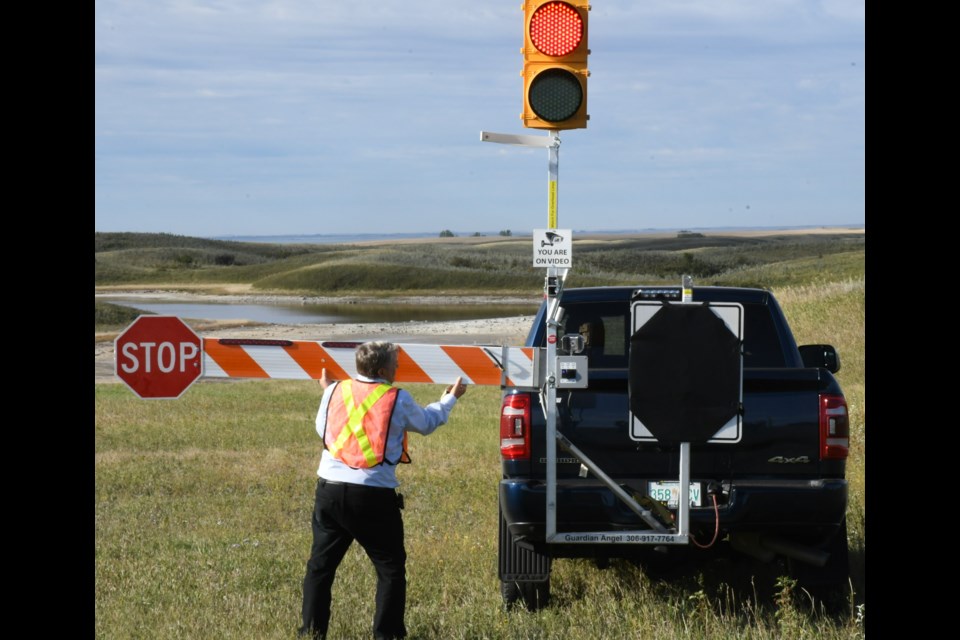The death of construction flag woman Ashley Richards nine years ago prompted a Saskatchewan company to develop a new system to make construction zones safer.
A motorist struck and killed Richards, 18, on Aug. 24, 2012, while she was working as a flag person on a highway near Midale. It was her second day on the job and she had been flagging for nearly three hours when she was killed.
Watrous-based entrepreneurs Kim and Donna Kreutzer decided to start Guardian Angel Auto Flagger Manufacturing and develop the remote-controlled Guardian Angel automatic flagging assistance device (AFAD). These truck-mounted devices allow flag people to be off the road while controlling traffic and minimizing their risk of injury.
The Ministry of Highways noticed this technology and acquired six AFADs for $22,000. It initiated a pilot program in which the remote-controlled Guardian Angel machines were used in work zones this construction season, including Moose Jaw, Outlook, and Prince Albert.
The pilot program evaluated the number of near misses, miscommunications, and feedback from flag persons in work zones.
The ministry held a news event on Sept. 7 west of Moose Jaw on Highway 363 to acknowledge the pilot project and the technology.
“Safety is a top priority. In the province, we’ve said that by 2030, we want to improve another 10,000 kilometres worth of highways,” said Highways Minister Fred Bradshaw. “With those improvements … we have to have flaggers out there working on our highways. And this is something that just makes things safer all around to work on our highways.”
Economic growth continues to occur in Saskatchewan, whether it’s the construction of crushing plants, development of mines, or transportation of grains, he continued. To ensure this growth continues, highways require continuous upgrading and safety needs to improve.
Bradshaw pointed to an incident in July where an impaired motorist sped through a construction zone on Highway 16 and nearly hit a flag worker before crashing into the ditch.
“That was absolutely stupid,” Bradshaw said. “It only takes one incident to threaten the well-being of a flagger and everyone else on the job. … this remote-controlled device keeps that flag person out of harm’s way while ensuring motorists receive direction. This unit is also easier and safer to move than other AFAD units.”
According to the ministry, trailer-mounted or stand-alone AFAD models have been used for larger construction sites, but their size and weight make them more difficult to move. The Guardian Angel is a truck-mounted model ideal for patching or maintenance projects where workers frequently move because the truck can be driven forward as needed.
It takes about two minutes to fully set up the Guardian Angel AFAD, which weighs 90 pounds and can be plugged into a two-inch received on a truck, explained Edward Anderson, marketing manager for the company. A remote control raises or lowers the stop arm, which features a stop sign and flashing red lights. A vertical post features a red/yellow traffic light that can be seen three kilometres away.
A camera also captures people who speed past the vehicle.
“The operator should never be in harm’s way,” he said.
Towing companies appreciate this technology since a tow truck driver is killed in North America every nine days, Anderson continued. Fire departments are also excited since the device help with accident scenes.
A white light can also be used for better visibility during foggy days.
“It’s all about sending people home safely at night,” Anderson added.




